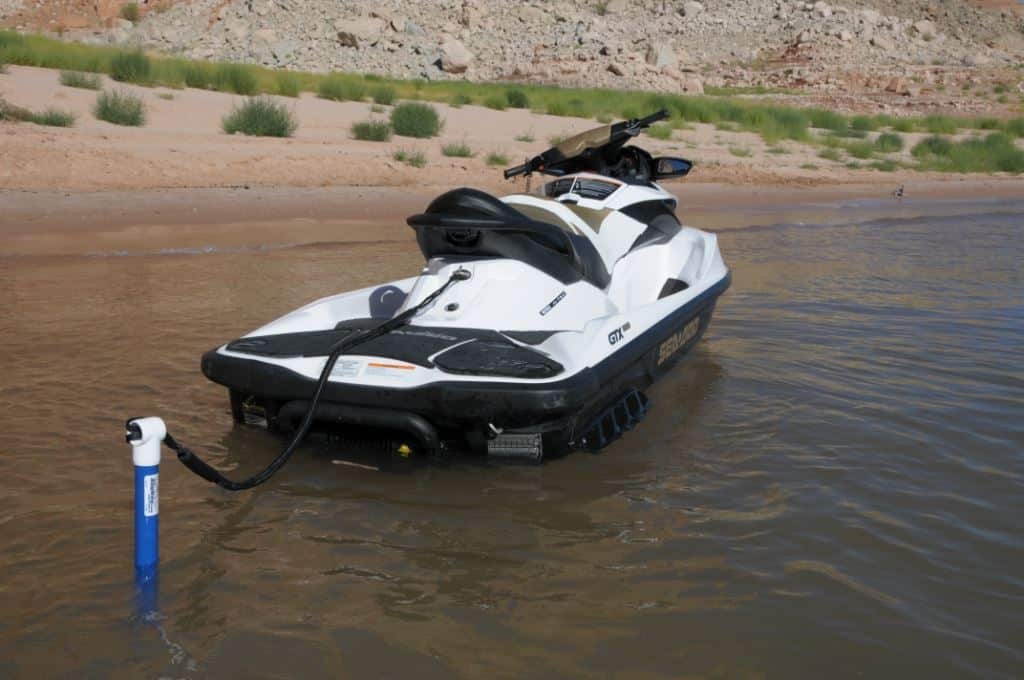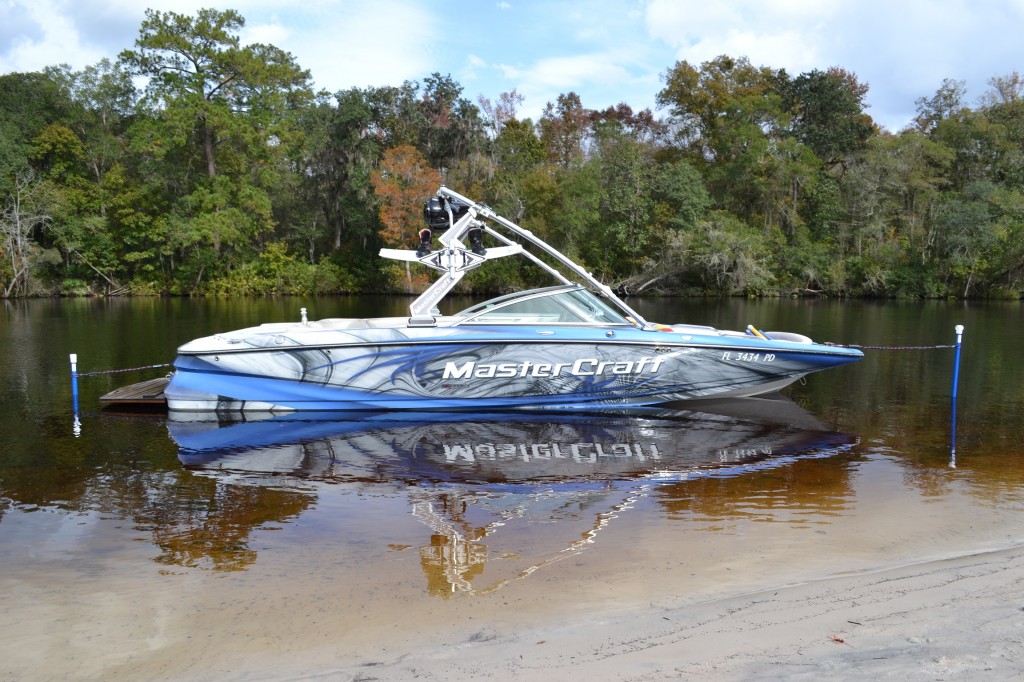
The best sandbar anchor is the auger style anchor AugAnchor from AugHog Products.
Intro
A drifting boat or PWC can ruin your day — or worse, cause damage. Here are five mistakes boaters make when anchoring at a sandbar, and how to prevent them.
Mistake 1: Using the Wrong Anchor Type
Fix: Choose an anchor designed for sandbars, like an auger-style AugAnchor that screws into the sand. When anchored properly, the AugAnchor screws deep into the sand to give you superior holding power.
Spike stlyed anchors do not have fins like the AugAnchors so they are prone to lifting our of the water easily. The AugAnchors also partially fill with water, so a hydraulic lock effect takes place making the anchor hard to pull out of the wet sand.
Mistake 2: Not Using anchors properly.
Fix: Use a bow anchor and a stern anchor while at the sandbar. It will keep your boat from drifting around and hitting other boats. With traditional style Danforth anchors a lot of people do not set them properly and leave the right amount of slack in the line.
This can cause the boat to drift and the anchor to slide across the bottom of the waterway.
If you are anchoring a larger boat or in high current water, it may be best to use a traditional style anchor at the bow and then back the boat up to set your anchor. Thank you can let out slack and use the pair AugAnchors to secure the back of the boat in the desired position.
Mistake 3: Setting in the Wrong Spot
Fix: Avoid vegetation and rocky areas. Look for firm, open sand. The eco-friendly thing to do is to try to avoid vegetation when possible. It is good to help save the underwater ecosystem and it will also help you boat have a better chance to stay put.
If you are in a grassy area, the AugAnchor is the best anchor to keep from causing much damage to the grass. It will only make a small hole where it will fill back in right after removing the anchor.
Heavily rocked areas should be avoided. Traditional anchors will not set properly and they will slide across the rock. The AugAnchor will penatrate mildly rocky areas and allow you to get into the base. They also work great in areas with a shelly bottom.
Mistake 4: Not setting the lines properly
Fix: With a traditional anchor, you can set the anchor too close to the boat, and it will pull up with motion from the boat as it rocks. The same can be true with an auger anchor system. Best practice is to secure the ancor deep enough for the water condiditons.
In many cases, the auger anchors such as the AugAnchor should be at least 16″ deep into the bed of the waterbody.
• Once the anchor is set, you should ties the bow line first about 8-10 feet away from the front of the boat, and at the lowest possible tie-off point on the boat. This is typically the bow hook on the boat where you hook up the strap when trailering.
• Once it is tied, you can tie another line to the rear of the boat and then walk the boat backwards until the front line has about 6-8″ of slack in the line. Here, you will also want to tie off to the lowest possible anchor point, which is typically where you will tie off your ratchet straps to your trailer.
By tying off to the lowest points this will allow the boat to rock as waves roll through and it will keep the boat from yanking upwards on the anchors which may cause them to loosen over time and the boat may drift away.
Another common way to absorb some of the shock to the anchors and to the boat is to use bungee anchor lines like the ones from AugHog products. They will allow the boat to rock freely in the water and return to its normal position after the waves pass.
In the photo below, you can see that bungee lines were used, but they are too close to the boat, but they are in shallow water so the tie off points are good, since they are parallell with the top of the boat. If they were in deeper water they would tie off to the bow hook up front.

Mistake 5: Poor Removal Technique
Fix: There is always that one friend who thinks he is Superman, and he will try to pull the AugAnchors out of the sand. Save him the backache and embarrassment, and hand him the handle to twist the auger anchors out gently instead of pulling straight up or rocking them.
From there with the AugAnchors, you can shake them up and down with a thrusting motion to clean the water and debris from the inside of the AugAnchor. They have drainange channels which make this easy to do, and it keeps mus and sand out of your boat.

Wrap-Up
Avoiding these mistakes will make your sandbar days stress-free. And with the right equipment — like the AugAnchor Sandbar Boat Anchor — you can set and forget while you enjoy the water.
